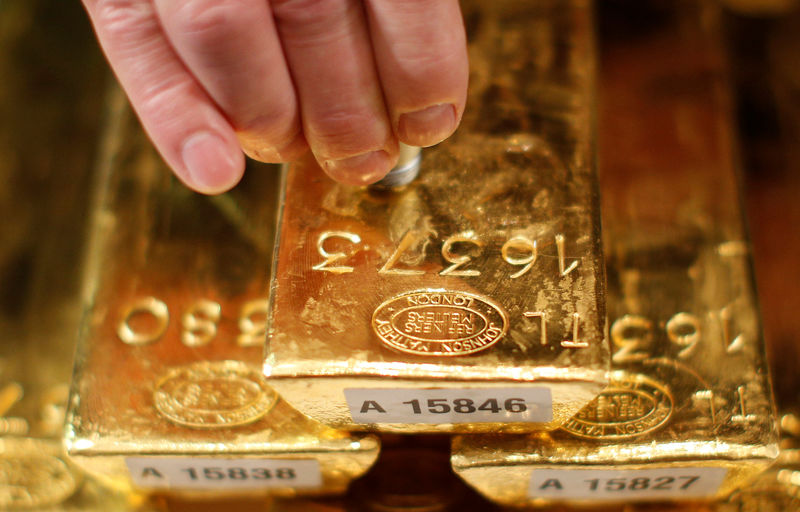Commodities
Gold prices weaken, spot slips below $1,900 as rate hike fears persist


© Reuters.
Investing.com– Gold prices fell below key levels on Wednesday, extending a recent slump as persistent fears of rising interest rates, following hawkish signals from the Federal Reserve, saw investors largely favor the dollar.
The scaled 10-month highs this week, having largely overtaken gold as a preferred safe haven this year as interest rates rose. With the Fed now signaling one more rate hike in 2023 and fewer rate cuts next year, this trend is set to continue.
Surging Treasury yields also pressured gold’s appeal, with the hitting a 16-year high this week.
– which represents real-time trade in physical bullion, sank 0.2% to $1,897.49 an ounce, falling below the $1,900 level for the first time in a month.
expiring in December fell 0.2% to $1,914.95 an ounce, and were also trading at one-month lows by 00:31 ET (04:31 GMT). Both instruments extended losses into a third straight session.
Rising interest rates push up the opportunity cost of investing in gold and other non-yielding assets. This trade had battered the yellow metal through the past year.
Any scope for a recovery in gold is also clouded by the prospect of U.S. rates remaining higher for longer.
Gold sees little safe haven demand even as govt shutdown looms
The yellow metal saw few safe haven flows even as markets grew more concerned over a U.S. government shutdown. Congress has until the end of September to pass a spending bill, although policymakers showed little signs of reaching consensus on a broader spending bill.
Analysts warned that a shutdown in 2023 could have greater ramifications for the U.S. economy, especially as it grapples with high interest rates and sticky inflation.
But that notion appeared to have driven few inflows into gold, given that past shutdowns had a limited impact on risk-driven assets, particularly stocks.
Copper weakens despite positive Chinese data, property jitters deepen
Among industrial metals, copper prices fell on Wednesday even as data showed that China’s rebounded in August after a nearly year-long slump.
fell 0.2% to $3.6402 a pound, and were close to a one-month low.
Optimism over the Chinese data was largely offset by worsening fears of a property market crisis.
Media reports said that the chairman of beleaguered developer China Evergrande Group (HK:) had been placed under police surveillance, just a few days after it suspended its debt restructuring plan over an investigation into its unit Hengda Real Estate.
Evergrande is the world’s most indebted property developer, and is at the heart of a deepening debt crisis in China, which has dented economic growth over the past three years.
China’s property market is key source of copper demand, with concerns over the sector having battered copper prices through the past year.
Commodities
Oil prices rise; U.S. crude inventories plunge, Russia-Ukraine truce eyed
Commodities
India’s Reliance to stop buying Venezuelan oil over US tariffs, sources say
Commodities
Oil prices climb on Venezuela supply worries

 Forex3 years ago
Forex3 years agoForex Today: the dollar is gaining strength amid gloomy sentiment at the start of the Fed’s week

 Forex3 years ago
Forex3 years agoUnbiased review of Pocket Option broker

 Forex3 years ago
Forex3 years agoDollar to pound sterling exchange rate today: Pound plummeted to its lowest since 1985

 Forex3 years ago
Forex3 years agoHow is the Australian dollar doing today?

 Cryptocurrency3 years ago
Cryptocurrency3 years agoWhat happened in the crypto market – current events today

 World3 years ago
World3 years agoWhy are modern video games an art form?

 Commodities3 years ago
Commodities3 years agoCopper continues to fall in price on expectations of lower demand in China

 Economy3 years ago
Economy3 years agoCrude oil tankers double in price due to EU anti-Russian sanctions























